
Custer: The Gateway to the Black Hills
Discover Custer, South Dakota – a historic city in the Black Hills offering charming downtown streets, awe-inspiring natural beauty, and exciting outdoor adventures.
Nestled in the heart of the Black Hills, Custer, South Dakota, is a charming city rich in history and natural beauty. Founded in 1875, the city has a deep connection to the gold rush era and offers a glimpse into the rugged life of early American pioneers. As you stroll through the downtown area, you will find quaint shops, local restaurants, and historic buildings that tell the story of this vibrant community. Custer is the perfect base for exploring the stunning landscapes of the Black Hills National Forest. Just a short drive away, you will find the majestic Mount Rushmore National Memorial, where the faces of four U.S. presidents are carved into the granite mountainside. For those seeking adventure, Custer State Park is a must-visit destination. With its scenic drives, abundant wildlife, and opportunities for hiking, fishing, and camping, the park is a haven for outdoor enthusiasts. Beyond its natural attractions, Custer also hosts a variety of events throughout the year, including the popular Gold Discovery Days and the Buffalo Roundup. These events celebrate the city's heritage and offer unique experiences for visitors of all ages. Whether you are interested in history, nature, or simply looking for a peaceful retreat, Custer provides an unforgettable experience in the heart of South Dakota.
Local tips in Custer
- Visit Custer State Park early in the morning to catch the wildlife at its most active.
- Check the local event calendar for festivals and activities during your stay.
- Bring a camera, as the scenic drives and hiking trails offer fantastic photo opportunities.
- Stop by the local visitor center for maps and insider tips on the best spots to explore.
- Wear comfortable walking shoes; many attractions are best explored on foot.
Custer: The Gateway to the Black Hills
Nestled in the heart of the Black Hills, Custer, South Dakota, is a charming city rich in history and natural beauty. Founded in 1875, the city has a deep connection to the gold rush era and offers a glimpse into the rugged life of early American pioneers. As you stroll through the downtown area, you will find quaint shops, local restaurants, and historic buildings that tell the story of this vibrant community. Custer is the perfect base for exploring the stunning landscapes of the Black Hills National Forest. Just a short drive away, you will find the majestic Mount Rushmore National Memorial, where the faces of four U.S. presidents are carved into the granite mountainside. For those seeking adventure, Custer State Park is a must-visit destination. With its scenic drives, abundant wildlife, and opportunities for hiking, fishing, and camping, the park is a haven for outdoor enthusiasts. Beyond its natural attractions, Custer also hosts a variety of events throughout the year, including the popular Gold Discovery Days and the Buffalo Roundup. These events celebrate the city's heritage and offer unique experiences for visitors of all ages. Whether you are interested in history, nature, or simply looking for a peaceful retreat, Custer provides an unforgettable experience in the heart of South Dakota.
When is the best time to go to Custer?
Iconic landmarks you can’t miss
Custer State Park
Discover the breathtaking beauty and wildlife of Custer State Park, a premier destination in South Dakota for outdoor adventure and natural wonders.
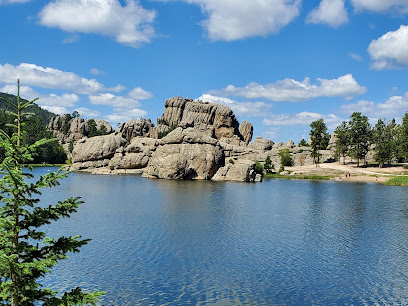
Black Hills Sauce & Dough
Discover unique flavors at Black Hills Sauce & Dough, a must-visit restaurant in Custer, SD, for an unforgettable dining experience in the Black Hills.

Buglin' Bull Restaurant and Sports Bar
Experience the best of American cuisine at Buglin' Bull Restaurant and Sports Bar, a family-friendly haven in Custer, South Dakota, perfect for sports lovers and foodies.
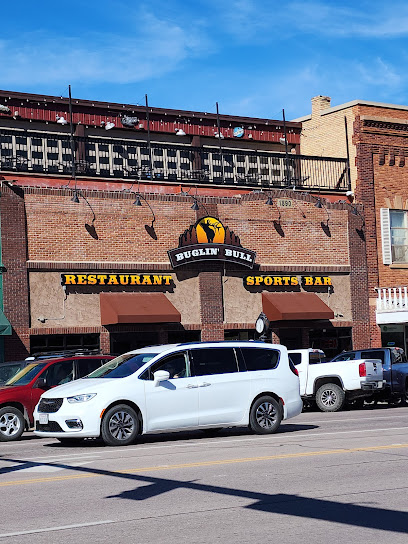
Jewel Cave National Monument
Explore the stunning underground world of Jewel Cave National Monument, a geological wonder in the Black Hills of South Dakota, rich in beauty and adventure.
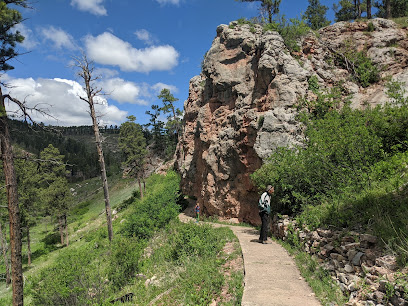
Purple Pie Place
Discover the delightful flavors of Purple Pie Place in Custer, SD, where homemade pies and friendly service create a memorable dining experience.
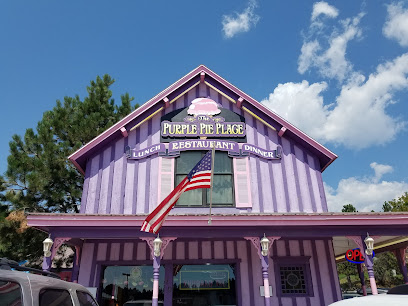
Mt. Rushmore Brewing Company & Pounding Fathers Restaurant
Experience the best of South Dakota's craft beer and local cuisine at Mt. Rushmore Brewing Company & Pounding Fathers Restaurant, a must-visit brewpub.

The Custer Wolf - Food & Drink
Experience the authentic taste of America at The Custer Wolf, where delicious food meets a vibrant bar atmosphere in the heart of Custer, South Dakota.
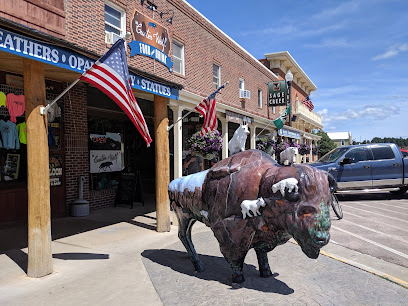
Begging Burro Mexican Bistro
Experience authentic Mexican flavors and vibrant atmosphere at Begging Burro Mexican Bistro in Custer, South Dakota.
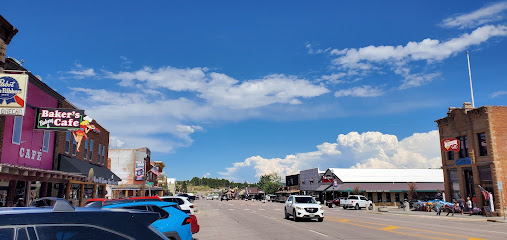
Needles Eye Tunnel
Experience the stunning Needles Eye Tunnel, a breathtaking granite formation in Custer State Park, South Dakota, that captivates every visitor.
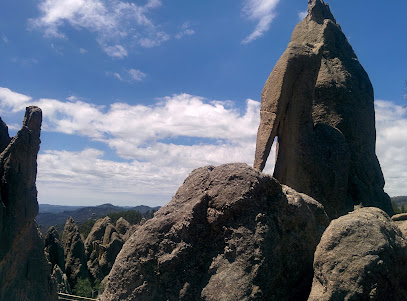
Custer State Park Visitor Center
Explore the stunning landscapes and rich wildlife of Custer State Park at the Visitor Center, your gateway to adventure in South Dakota's natural paradise.
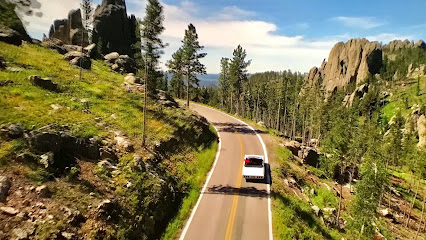
Needles Highway Scenic Overlook
Explore the stunning beauty of Needles Highway Scenic Overlook, where nature's artistry creates unforgettable vistas in the heart of South Dakota.
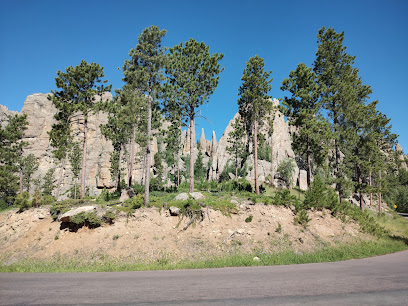
Bavarian Inn, Black Hills
Discover Bavarian hospitality in the heart of the Black Hills, where comfort meets adventure for an unforgettable getaway.
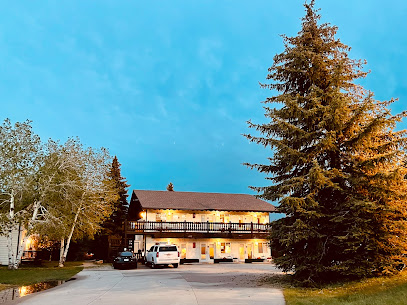
Skogen Kitchen
Discover Skogen Kitchen in Custer, SD, where farm-to-table meets exquisite dining in a cozy, welcoming atmosphere.
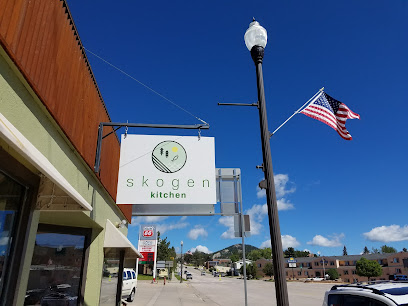
Calamity Jane Coffee Shop and Grill
Discover Calamity Jane Coffee Shop and Grill, the cozy coffee haven in Custer, SD, where delicious brews meet unique local souvenirs and exquisite wines.
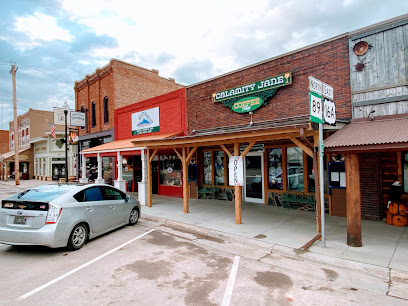
Pizza Mill
Experience the taste of Custer at Pizza Mill, where delicious pizzas and hearty meals await in a friendly, inviting atmosphere.
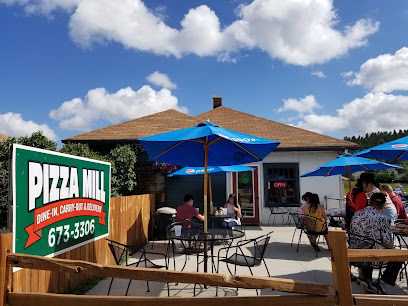
Unmissable attractions to see
Mount Rushmore National Memorial
Explore the iconic Mount Rushmore National Memorial, a breathtaking tribute to American history nestled in the scenic Black Hills of South Dakota.
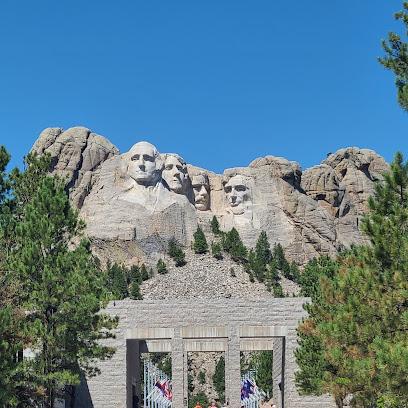
Mount Rushmore National Memorial
Discover the awe-inspiring Mount Rushmore National Memorial, where history and artistry unite in the majestic Black Hills of South Dakota.

Bear Country USA
Discover Bear Country USA: a unique wildlife park in Rapid City showcasing North American animals in their natural habitats.
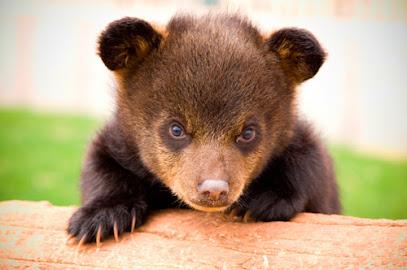
Black Hills National Forest
Experience the breathtaking beauty and adventure of Black Hills National Forest, a natural wonder in South Dakota perfect for outdoor enthusiasts.

The Mammoth Site
Explore the incredible Mammoth Site in Hot Springs, South Dakota, home to the largest concentration of mammoth remains and a hub for paleontological discovery.
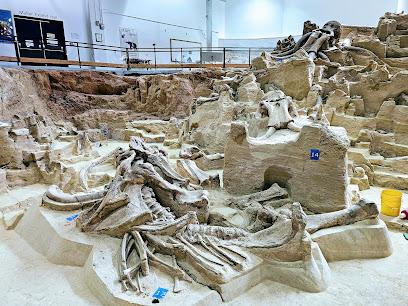
Crazy Horse Memorial
Discover the breathtaking Crazy Horse Memorial, a monumental tribute that honors Native American heritage and artistry in South Dakota's Black Hills.
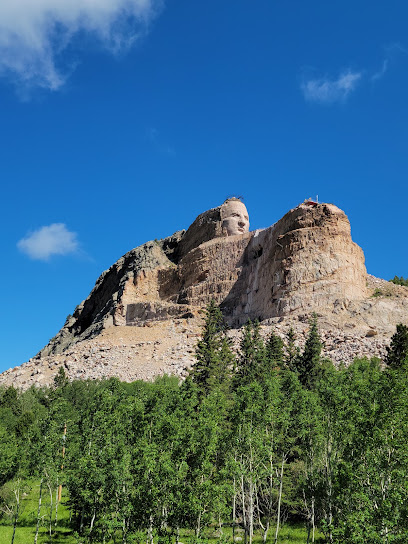
Indian Museum of North America
Explore the Indian Museum of North America for an enriching journey into Indigenous heritage and culture in the heart of South Dakota.
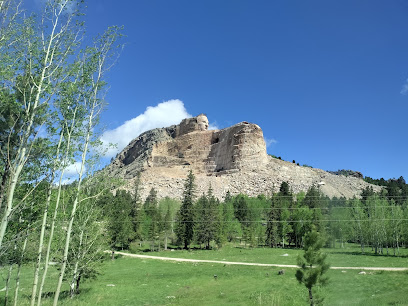
1880 Train - Hill City Depot
Discover the scenic beauty and historical charm of the 1880 Train in Hill City, South Dakota—a perfect family adventure.
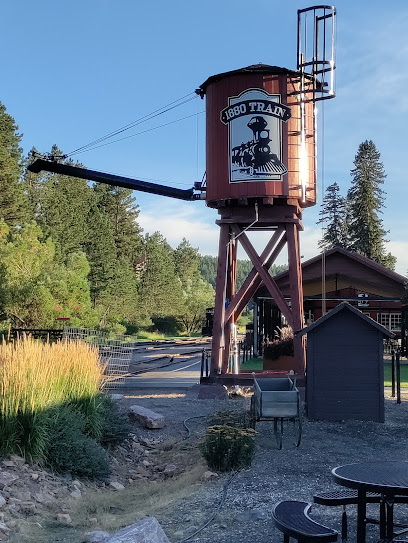
Wind Cave National Park
Discover the unique underground wonders and stunning landscapes of Wind Cave National Park in South Dakota, a must-visit for nature enthusiasts and adventure seekers.

Cosmos Mystery Area
Explore the Cosmos Mystery Area in Rapid City, SD, where gravity takes a vacation and reality is turned upside down. A fun-filled adventure awaits!
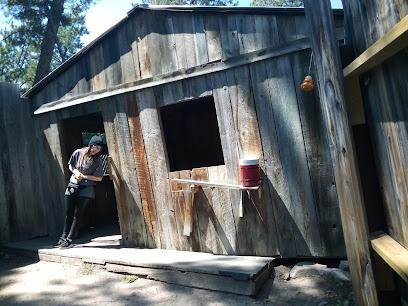
Cosmos Mystery Area
Discover the enchanting Cosmos Mystery Area in Rapid City, South Dakota, where gravity defies logic and fun awaits for all ages.
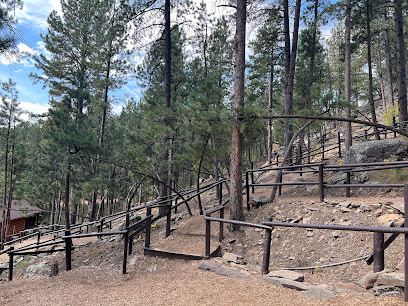
Wind Cave National Park Visitor Center
Experience the breathtaking beauty and underground wonders at Wind Cave National Park Visitor Center in South Dakota.

Fort Hays Chuckwagon Supper & Show
Discover the charm of the Wild West at Fort Hays Chuckwagon Supper & Show, where history meets delicious cowboy cuisine in Rapid City, South Dakota.

Norbeck Overlook
Experience the awe-inspiring views at Norbeck Overlook, a must-visit scenic spot in the beautiful Black Hills of South Dakota.
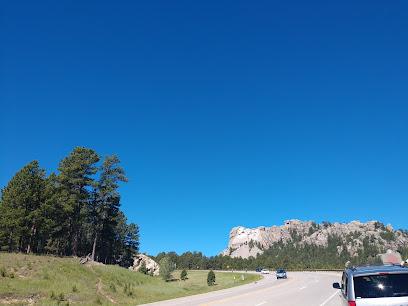
Big Thunder Gold Mine
Explore the fascinating history of gold mining at Big Thunder Gold Mine while enjoying delightful food and unique shopping in Keystone, South Dakota.
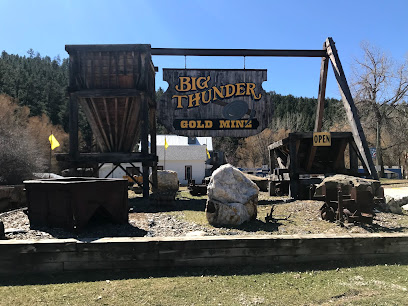
Essential places to dine
Black Hills Sauce & Dough
Experience unique flavors at Black Hills Sauce & Dough – where fresh ingredients meet creative cooking in Custer, SD.
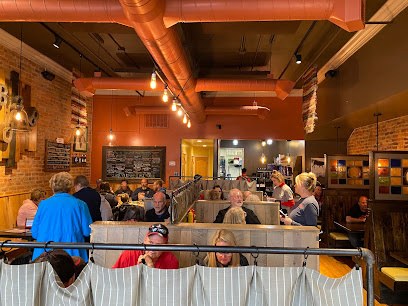
Buglin' Bull Restaurant and Sports Bar
Delight in classic American cuisine at Buglin' Bull Restaurant & Sports Bar in Custer, SD – where great food meets vibrant sports culture.
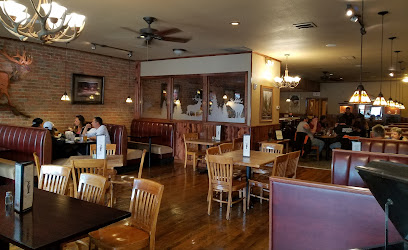
Powder House
Experience exceptional dining at Powder House in Keystone - where delicious steaks meet warm hospitality in the heart of South Dakota.

Purple Pie Place
Discover the sweet side of Custer at Purple Pie Place - where every slice tells a story and every scoop is crafted with love.
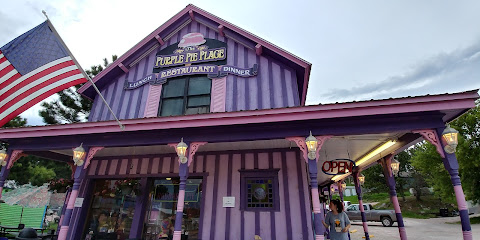
Mt. Rushmore Brewing Company & Pounding Fathers Restaurant
Discover local craft beers and delicious meals at Mt. Rushmore Brewing Company & Pounding Fathers Restaurant in scenic Custer, SD.
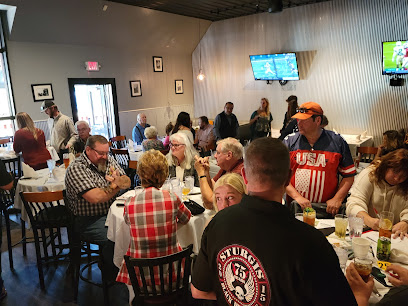
The Custer Wolf - Food & Drink
Experience the best of American cuisine and vibrant bar culture at The Custer Wolf in South Dakota's scenic town of Custer.
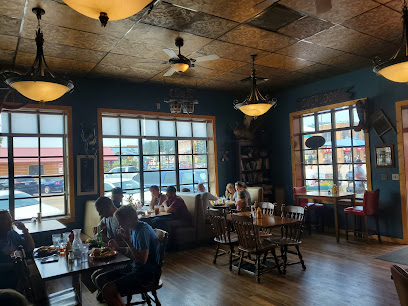
Begging Burro Mexican Bistro
Experience the vibrant flavors and welcoming atmosphere at Begging Burro Mexican Bistro in Custer - where every bite is a celebration!
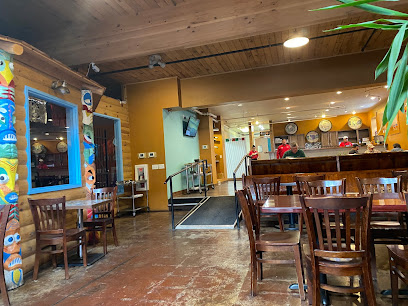
Baker's Bakery & Cafe
Experience the delightful flavors of Baker's Bakery & Cafe in Custer – where fresh ingredients meet warm hospitality.
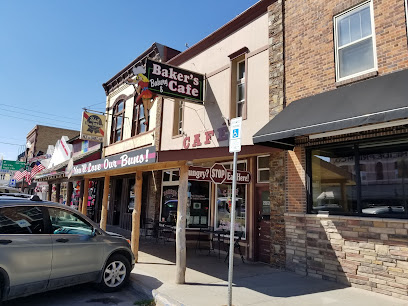
Skogen Kitchen
Experience exceptional farm-to-table dining at Skogen Kitchen in Custer, SD—where innovation meets local flavors.
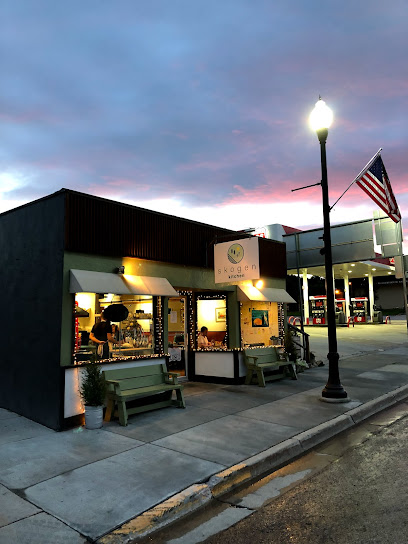
Maria's Mexican Restaurant
Experience authentic Mexican cuisine at Maria's Mexican Restaurant in Custer - where every dish is made with love and tradition.
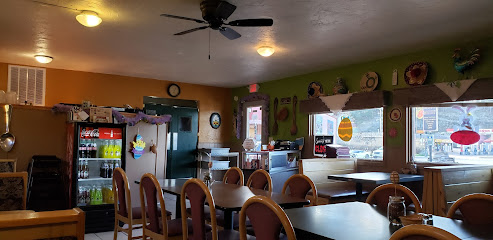
Pizza Mill
Savor delicious pizzas and hearty pastas at Pizza Mill in Custer—your go-to spot for comfort food in South Dakota.
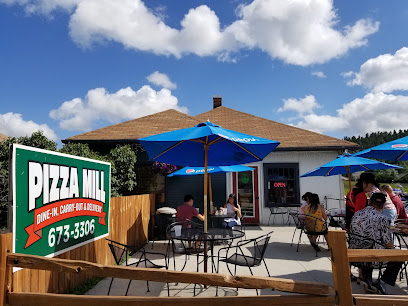
Sage Creek Grille - Closed for the Season - Reopening Spring 2024
Experience delightful American cuisine at Sage Creek Grille in Custer, SD – where local flavors meet warm hospitality.
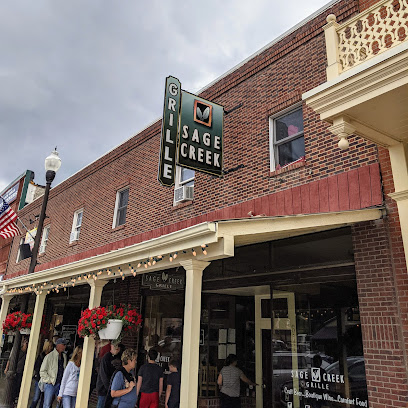
Our Place
Discover hearty breakfasts at Our Place in Custer - where every meal is made with love amidst stunning South Dakota landscapes.

Dairy Queen Grill & Chill
Experience classic fast food and irresistible ice cream delights at Dairy Queen Grill & Chill in Custer, South Dakota.
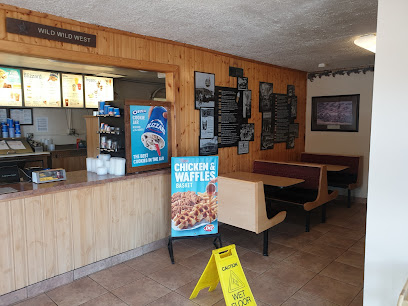
The Custer Beacon
Discover The Custer Beacon in South Dakota – where delectable cuisine meets lively entertainment in a cozy atmosphere.
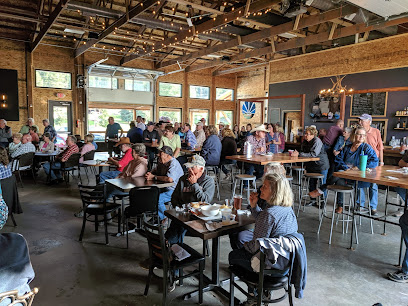
Markets, malls and hidden boutiques
Purple Pie Place
Indulge in heavenly homemade pies and sweet treats at Purple Pie Place in Custer, SD, a must-visit for dessert lovers and travelers.
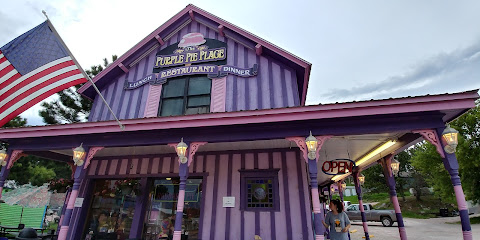
Calamity Jane Coffee Shop and Grill
Experience the warmth of Custer at Calamity Jane Coffee Shop and Grill, where delicious coffee meets local charm and unique souvenirs.
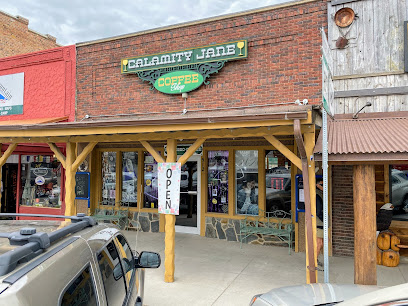
Lynns Dakotamart
Experience the convenience and local charm of Lynns Dakotamart, your essential grocery stop in Custer, South Dakota.
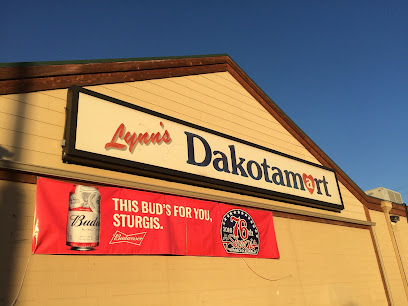
Claw Antler & Hide Co
Explore the rich heritage of South Dakota at Claw Antler & Hide Co, featuring Native American crafts, unique collectibles, and stunning jewelry.
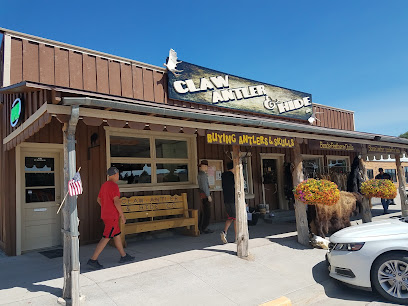
Miner's Cup
Discover the perfect blend of coffee and breakfast at Miner’s Cup in Custer, South Dakota - a cozy haven for travelers.
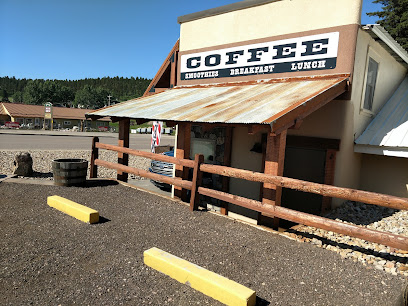
Dave's Rock Shop
Explore the beauty of nature at Dave's Rock Shop, Custer's premier destination for stunning minerals, fossils, and unique gifts.
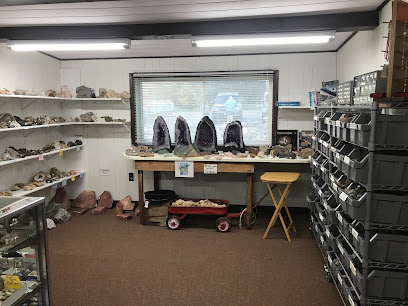
Horatio's Homemade Ice Cream
Discover the sweet side of Custer, South Dakota at Horatio's Homemade Ice Cream, where every scoop is a burst of flavor.
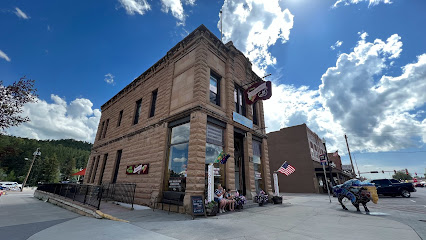
Ken's Minerals & Trading Post
Explore Ken's Minerals & Trading Post in Custer, SD - a unique rock shop brimming with stunning minerals, crystals, and geological treasures.

Custer Ace Hardware
Explore Custer Ace Hardware for all your home improvement needs in the heart of South Dakota, where quality and community meet.
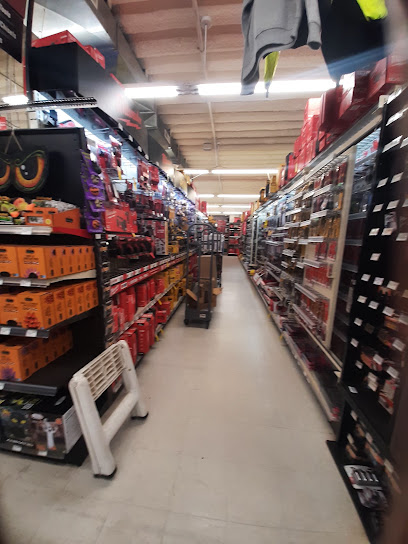
Dollar General
Explore an array of affordable items at Dollar General in Custer, SD - your one-stop shop for essentials, beauty supplies, and unique finds.

South Dakota Outdoor Shop
Discover adventure at South Dakota Outdoor Shop – your go-to for sporting goods and camping gear in the heart of Custer.
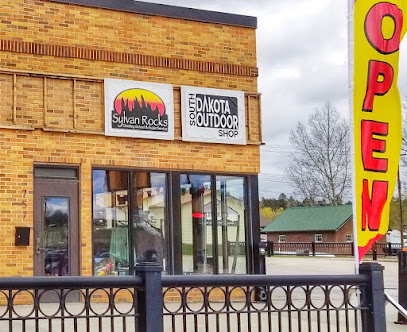
Wild Spruce Market
Explore Wild Spruce Market in Custer, SD - Your destination for fresh, organic groceries, local brews, and a cozy coffee shop experience.
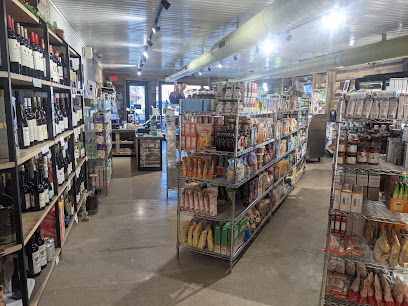
Boyds Antiques
Explore Boyds Antiques in Custer, SD, where history and unique finds come together for an unforgettable vintage shopping experience.
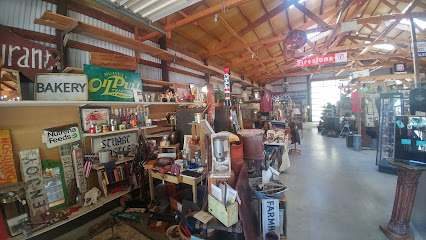
Custer County Candy Co
Discover a sugary paradise at Custer County Candy Co, where every visit is a delightful journey through sweet treats and ice cream bliss.
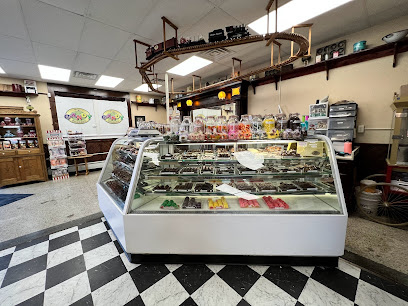
Family Dollar
Discover unbeatable savings on essentials and unique finds at Family Dollar in Custer, South Dakota, your budget-friendly shopping destination.
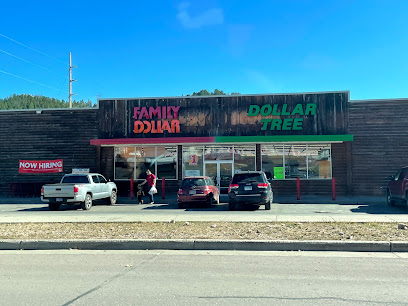
Essential bars & hidden hideouts
Black Hills Sauce & Dough
Experience a culinary adventure at Black Hills Sauce & Dough, where local flavors meet creative dishes in the heart of Custer, South Dakota.
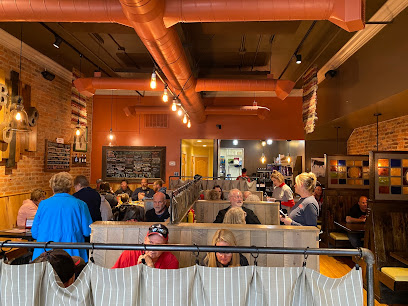
Buglin' Bull Restaurant and Sports Bar
Experience the vibrant atmosphere and delicious American cuisine at Buglin' Bull, a top dining choice in Custer, South Dakota.
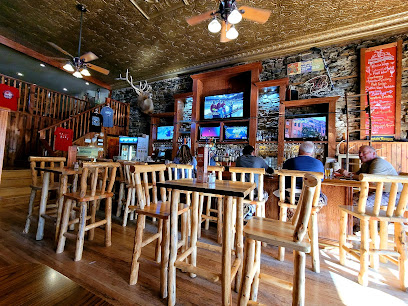
Mt. Rushmore Brewing Company & Pounding Fathers Restaurant
Discover locally brewed beers and delicious cuisine in a cozy atmosphere at Mt. Rushmore Brewing Company in Custer, SD.
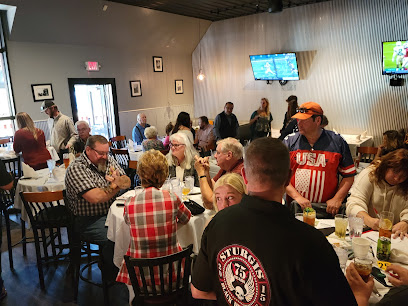
The Custer Wolf - Food & Drink
Discover delightful American cuisine at The Custer Wolf, a top dining destination in Custer, South Dakota, blending local flavors with a cozy atmosphere.
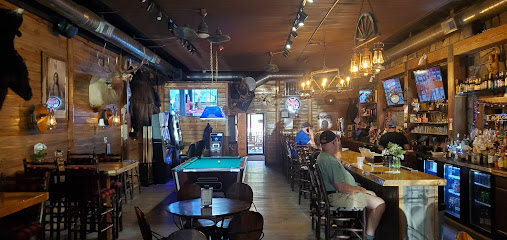
Begging Burro Mexican Bistro
Experience the vibrant flavors of authentic Mexican dishes and unique cocktails at Begging Burro Mexican Bistro in Custer, South Dakota.
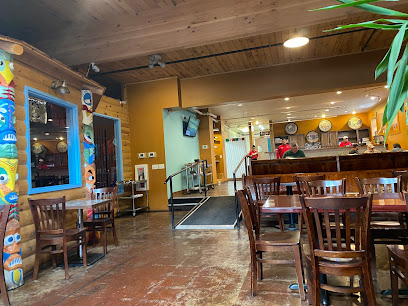
Skogen Kitchen
Experience the flavors of South Dakota at Skogen Kitchen, where innovative cuisine meets exceptional service in a charming setting.

Calamity Jane Coffee Shop and Grill
Discover delightful flavors at Calamity Jane Coffee Shop and Grill, where coffee meets creativity in the heart of Custer, South Dakota.
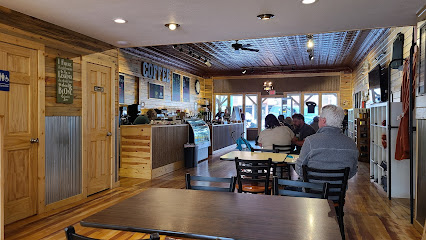
Sage Creek Grille - Closed for the Season - Reopening Spring 2024
Experience the best of American cuisine at Sage Creek Grille in Custer, South Dakota - a culinary gem in the heart of the Black Hills.
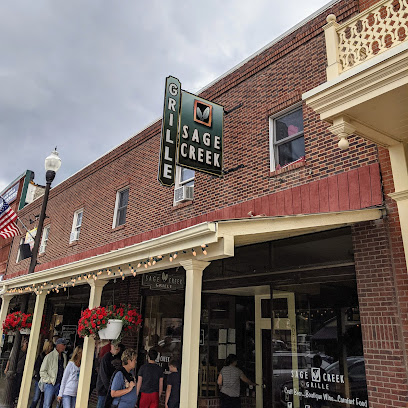
Our Place
Discover the heart of Custer with a breakfast experience at Our Place, where local flavors meet warm hospitality in a cozy atmosphere.
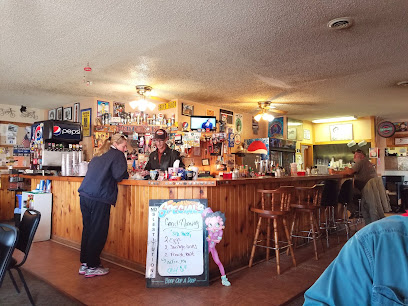
Dairy Queen Grill & Chill
Experience the delicious blend of fast food and ice cream at Dairy Queen Grill & Chill in Custer, South Dakota, a must-visit for every traveler.
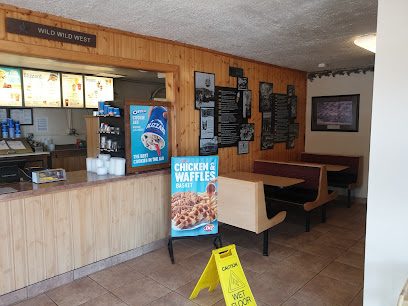
The Custer Beacon
Experience the lively atmosphere, delicious food, and vibrant live music at The Custer Beacon in South Dakota.
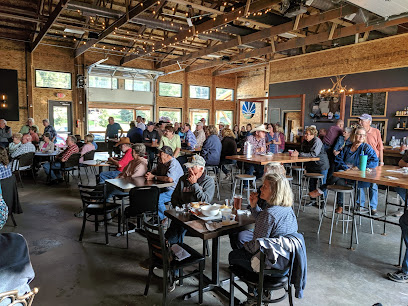
Miner's Cup
Experience the heart of Custer at Miner's Cup, where great coffee and hearty breakfasts meet warm local hospitality.

The Frontier Bar & Grill
Experience a taste of classic American cuisine in a family-friendly atmosphere at The Frontier Bar & Grill in Custer, South Dakota.
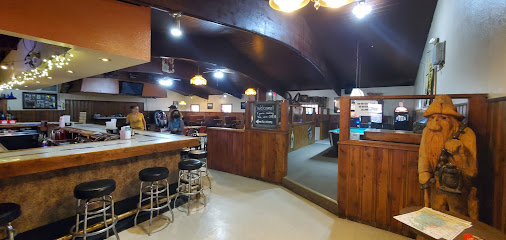
Captain's Table
Experience local cuisine at Captain's Table, a cozy restaurant in Custer, South Dakota, perfect for unwinding after exploring the Black Hills.

Gold Pan Saloon Custer
Experience the authentic spirit of Custer at Gold Pan Saloon, where local charm meets classic bar vibes for an unforgettable night.
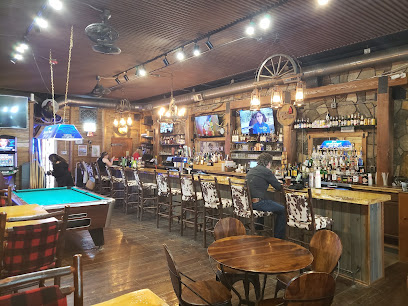
Local Phrases
-
- HelloHowdy
[haw-dee] - GoodbyeSee ya later
[see yuh lay-tur] - YesYup
[yuhp] - NoNah
[nuh] - Please/You're welcomePlease/No problem
[pleez / no prob-lem] - Thank youThanks
[thanks] - Excuse me/SorryPardon me/My bad
[par-dun mee / my bad] - How are you?Howdy
[haw-dee] - Fine. And you?Just dandy. How 'bout you?
[just dan-dee. how bout yuh?] - Do you speak English?Y'all speak English?
[yawl speak ing-glish?] - I don't understandI ain't catchin' on
[I aint catch-in on]
- HelloHowdy
-
- I'd like to see the menu, pleaseCan I take a gander at the menu, please
[can I take a gan-der at the menu, please] - I don't eat meatI don't do meat
[I don't do meat] - Cheers!Bottoms up!
[baw-tums up] - I would like to pay, pleaseI reckon it's time to settle up
[I reck-on its time to set-ul up]
- I'd like to see the menu, pleaseCan I take a gander at the menu, please
-
- Help!SOS!
[S-O-S] - Go away!Git outta here!
[git out-uh here] - Call the Police!Phone the Sheriff!
[phone the sher-iff] - Call a doctor!Get the Doc on the line!
[get the doc on the line] - I'm lostI'm turned around
[I'm turned around] - I'm illI'm feelin' poorly
[I'm feel-in poorly]
- Help!SOS!
-
- I'd like to buy...I'm fixin' to buy...
[I'm fix-in to buy] - I'm just lookingI'm just browsin'
[I'm just brow-zin] - How much is it?What's the damage?
[whats the dam-age] - That's too expensiveThat's a bit steep
[That's a bit steep] - Can you lower the price?Can you do better on the price?
[Can you do bet-ter on the price]
- I'd like to buy...I'm fixin' to buy...
-
- What time is it?What's the hour?
[whats the hour] - It's one o'clockIt's one
[its one] - Half past (10)Ten-thirty
[ten-thur-tee] - MorningMornin'
[Morn-in] - AfternoonAfternoon
[after-noon] - EveningEvenin'
[Even-in] - YesterdayYest'day
[yes-t'day] - TodayToday
[to-day] - TomorrowTomorrah
[tom-orr-ah] - 1One
[wun] - 2Two
[too] - 3Three
[three] - 4Four
[four] - 5Five
[five] - 6Six
[six] - 7Seven
[seven] - 8Eight
[eight] - 9Nine
[nine] - 10Ten
[ten]
- What time is it?What's the hour?
-
- Where's a/the...?Where's the...
[wheres the] - What's the address?What's the street name?
[whats the street name] - Can you show me (on the map)?Can you point it out?
[Can you point it out] - When's the next (bus)?When's the next (bus)?
[whens the next bus] - A ticket (to ....)A ticket (to ....)
[A ticket]
- Where's a/the...?Where's the...
History of Custer
-
In 1874, General George Armstrong Custer led an expedition into the Black Hills, an area considered sacred by the Lakota Sioux. The discovery of gold in French Creek set off the Black Hills Gold Rush, attracting thousands of prospectors to the region. This influx of settlers led to the establishment of the town of Custer, named after the general himself. The gold rush played a significant role in the settlement and development of the area, though it also resulted in conflicts with the Native American tribes who were displaced by the encroachment of miners.
-
Custer, South Dakota, was officially founded in 1875, making it the oldest town established by European Americans in the Black Hills. The town quickly grew as a hub for miners and prospectors seeking their fortunes. The early days of Custer were characterized by rapid construction, with tents and log cabins springing up to accommodate the influx of new residents. The initial prosperity from the gold rush, however, was short-lived as richer veins were discovered elsewhere in the Black Hills.
-
Fort Meade, established in 1878 near Sturgis, played a crucial role in the history of Custer and the surrounding Black Hills region. The fort was established to protect settlers and miners from potential conflicts with the Lakota Sioux, who were resisting the encroachment on their lands. Soldiers from Fort Meade were often dispatched to maintain order and provide security, which helped stabilize the region and allowed for continued settlement and development.
-
Although the Battle of the Little Bighorn did not occur in Custer, South Dakota, it is intimately connected to the town's namesake, General George Armstrong Custer. In 1876, Custer and his troops were defeated by a coalition of Native American tribes in what is now Montana. This event had significant repercussions for U.S. government policies towards Native Americans and the settlement of the American West. The battle remains a pivotal moment in American history and is often reflected upon by visitors to Custer, who are reminded of the complex and often tragic interactions between settlers and Native American tribes.
-
Just a short drive from Custer is the Crazy Horse Memorial, an ongoing mountain carving project begun in 1948 by sculptor Korczak Ziolkowski. The memorial honors the Lakota leader Crazy Horse and aims to preserve and promote Native American culture and history. Once completed, it will be the largest sculpture in the world. The project is entirely funded by private donations and admissions, and visitors to Custer often take the opportunity to visit this monumental work in progress, gaining insight into the rich cultural heritage of the region.
-
Custer State Park, established in 1912, is one of the most significant natural attractions in the area. Spanning over 71,000 acres, the park is home to diverse wildlife, including a large herd of American bison. The park's scenic drives, such as the Needles Highway and Iron Mountain Road, offer breathtaking views of the Black Hills' rugged landscape. The park also serves as a reminder of the conservation efforts that have been undertaken to preserve the natural beauty and ecological integrity of the region.
-
The George S. Mickelson Trail, named after a former South Dakota governor, is a 109-mile-long trail that winds through the Black Hills, passing through Custer. The trail follows the path of the historic Burlington Northern Railroad line, which once served the region's mining and logging industries. Today, the Mickelson Trail is a popular destination for outdoor enthusiasts, offering opportunities for hiking, biking, and horseback riding while providing a glimpse into the area's industrial past.
Custer Essentials
-
Custer, South Dakota is accessible via Rapid City Regional Airport (RAP), which is approximately 50 miles away. From the airport, you can rent a car or take a shuttle service to reach Custer. Alternatively, you can drive to Custer from major cities like Denver or Minneapolis, which are about 6-8 hours away by car.
-
The best way to get around Custer is by car, as public transportation options are limited. Car rentals are available at the Rapid City Regional Airport and in town. For those who prefer not to drive, local taxi services and guided tours are also available. Biking is another popular option for exploring the city and nearby attractions like Custer State Park.
-
The official currency is the US Dollar (USD). Credit and debit cards are widely accepted in hotels, restaurants, and shops. ATMs are available throughout Custer, but it is advisable to carry some cash, especially when venturing into more remote areas or for small purchases and tips.
-
Custer is generally a safe destination for tourists. However, it is advisable to take standard precautions such as avoiding isolated areas at night and keeping an eye on your belongings in crowded places. There are no specific high-crime areas targeting tourists, but staying vigilant and aware of your surroundings is always best.
-
In case of emergency, dial 911 for immediate assistance. Custer has a local police station and medical facilities. It is recommended to have travel insurance that covers medical emergencies. For minor health issues, there are pharmacies in town where you can purchase over-the-counter medications.
-
Fashion: Do dress in layers; weather can change quickly. Casual attire is generally acceptable. Religion: Do respect local customs if visiting religious sites, although Custer is not particularly known for them. Public Transport: Do use car rentals or taxis as public transport is limited. Greetings: Do greet people with a friendly hello or handshake. Eating & Drinking: Do try local delicacies like bison burgers. Don't forget to tip; 15-20% is standard in restaurants.
-
To experience Custer like a local, visit the Custer Farmers Market for fresh produce and handmade goods. Engage with locals for stories about the town’s history and hidden gems. Don’t miss the annual Custer State Park Buffalo Roundup, a unique event where you can see a herd of over 1,300 bison. For a scenic adventure, take a drive along the Needles Highway, which offers breathtaking views and unique rock formations.
Trending Landmark in Custer
-
Custer State Park
-
Black Hills Sauce & Dough
-
Buglin' Bull Restaurant and Sports Bar
-
Jewel Cave National Monument
-
Purple Pie Place
-
Mt. Rushmore Brewing Company & Pounding Fathers Restaurant
-
The Custer Wolf - Food & Drink
-
Begging Burro Mexican Bistro
-
Needles Eye Tunnel
-
Custer State Park Visitor Center
-
Needles Highway Scenic Overlook
-
Bavarian Inn, Black Hills
-
Skogen Kitchen
-
Calamity Jane Coffee Shop and Grill
-
Pizza Mill
Nearby Cities to Custer
-
Things To Do in Mount Rushmore
-
Things To Do in Rapid City
-
Things To Do in Deadwood
-
Things To Do in Gillette
-
Things To Do in Pierre
-
Things To Do in Sheridan
-
Things To Do in Cheyenne
-
Things To Do in Laramie
-
Things To Do in Sterling
-
Things To Do in Dickinson
-
Things To Do in North Platte
-
Things To Do in Fort Collins
-
Things To Do in Riverton
-
Things To Do in Mandan
-
Things To Do in Bismarck











